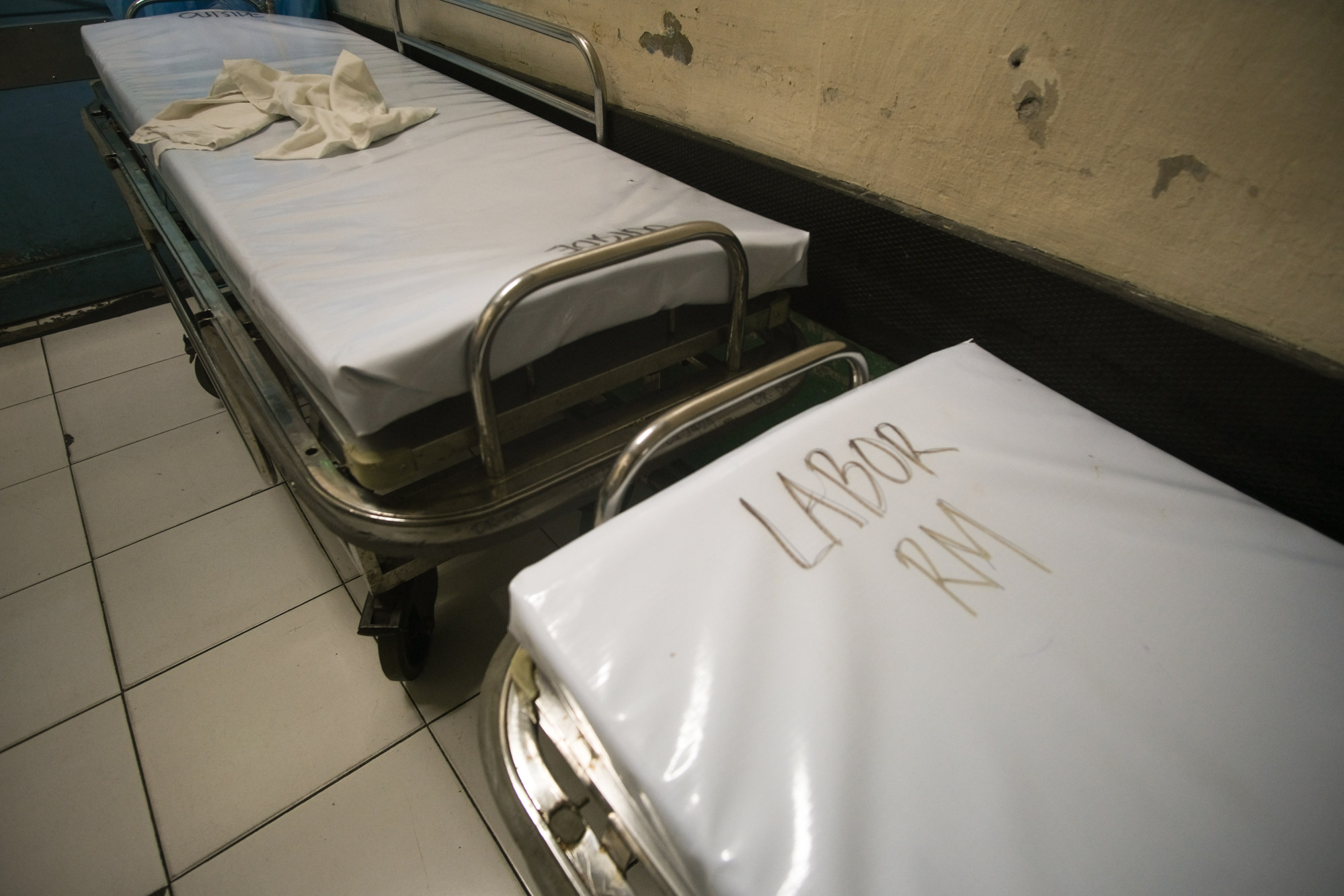“This is a critical issue that Filipinos deeply care about, and expressing unified support will emphasise its significance and urge swift action for its passage,” he said.

If the bill is passed into law, it would end the contradiction inherent in the fact that the legal age of consent for sexual relations is 16, but written parental consent is needed for children aged under 18 to access contraceptives.
This discordance, a lack of sufficient information on sexual and reproductive health, and the silencing effect of social stigma have fused to foster high rates of teenage pregnancies, health experts say.
“When girls are already sexually active, abstinence is not enough. They need to have access to contraceptives, which is another legal barrier in the country,” said Leila Joudane, Philippines representative of the United Nations Population Fund (UNFPA).
Big tummy, big money? Indonesian influencer’s pregnancy showcases unwed stigma
Big tummy, big money? Indonesian influencer’s pregnancy showcases unwed stigma
“This is why I’m happy to see in the Senate and the House, there is the Adolescent Pregnancy Prevention Bill that is now being discussed, so that adolescents can have access to contraception, at least when they are 15 and over,” she told Thomson Reuters Foundation.
The bill recognises the “evolving capacities of children” to make their own informed decisions when it comes to their health and sexuality.
It calls for children aged 15 and under, who are sexually active or pregnant or who have begun childbearing, to have full access to reproductive health services without parental consent. All boys and girls from 15-18 should also be allowed the same, the bill says.
In 2019, the government declared pregnancies among 10- to 14-year-olds a national social emergency. The following year, the UNFPA quoted World Bank data showing that the Philippines had 47 births annually per 1,000 women aged 15-19, equating to more than 500 Filipino adolescent girls getting pregnant and giving birth every day.
Population policies must put women’s reproductive rights front and centre
Population policies must put women’s reproductive rights front and centre
Although there was a drop in teenage pregnancy among girls aged 15 to 19 from 8.6 per cent in 2017 to 5.4 per cent last year, the UNFPA’s Joudane said early childbearing is a “vicious cycle” and the issue is far from being resolved, with rates remaining stubbornly high among girls aged 10-14.
The costs of teen pregnancies in a country where around 30 per cent of the population is under 15 and where recent estimates say one in six girls gets married before she is 18, ripple out from the individual to affect communities and the economy as well. That is why the bill is so important, say its supporters.
“It will save young girls from the clutches of maternal death, unemployment, poverty, improve their future and reinforce their self-esteem,” Edcel Lagman, one of the authors of the bill, said in a statement after it was passed by the House.
Ripple effects
Lagman has previously said that early pregnancy is one of the most reliable predictors of future poverty. This is because girls who become pregnant often fail to finish basic education and become economically vulnerable, entrenching intergenerational poverty.
“If we are to truly uplift the lives of women, we must start by improving the future of young girls,” he said after the vote.
Women’s fertility autonomy, not birth rates, should be our focus: UN
Women’s fertility autonomy, not birth rates, should be our focus: UN
The estimated net effect of early childbearing, taking into account lost opportunities and foregone earnings, is around 33 billion pesos (US$579.86 million) annually, according to a 2016 study commissioned by the UNFPA.
Adolescent pregnancy is also a major reason why the Philippines’ female labour force rate is one of the lowest in Southeast Asia.
The 2016 UNFPA study also found that only 65 per cent of girls who begin childbearing early are expected to complete high school, and that represents a further loss of earnings as girls who finish high school are likely to earn 300 pesos (US$5.26) more per day.
Joudane said early childbearing increases the rate of maternal mortality and affects girls’ access to education, opportunities to be productive and future life choices.

There are also health risks and these can be particularly debilitating for younger girls. They could include anaemia, sexually transmitted infections, post-partum haemorrhage and poor mental health outcomes, like depression.
The bill may help to turn the tide against teen pregnancies but activists acknowledge the challenge goes deeper. Changing mindsets will also be critical as will expanding access to adolescent-friendly sexual health services.
Bigger picture
“We need to address social norms and the legal barriers to sexual reproductive health services, and family planning programmes need to be accessible and available everywhere,” Joudane said.
For girls aged 10-14, “we need to educate parents so that they can give consent to girls to access contraceptives. It’s important to work on social norms and also the legal barriers”.

Last year, UNFPA, which wants to see zero teenage pregnancies by 2030, launched a US$1 million campaign alongside the Department of Health, the World Health Organization and the Korea International Cooperation Agency to support health workers as they work to combat teen pregnancies.
The project is designed to help 275,000 adolescents in 20 towns in Samar and Southern Leyte – two poor and typhoon-prone provinces in the Eastern Visayas region, which has one of the highest teenage pregnancy rates in the country with girls as young as 12 and 13 getting pregnant.
Eva Estonillo, a midwife and planning officer on adolescent health in the municipality of Marabut in Samar, helped turn her health unit into what the Department of Health calls an “adolescent-friendly facility”, offering peer consultations and information on maternal care and family planning.
Philippines fights pregnancy boom amid coronavirus lockdown
Philippines fights pregnancy boom amid coronavirus lockdown
“Before our facility became adolescent-friendly, young people would often shy away from seeking help, or they would be sent away by rural health staff,” said Estonillo.
“Because adolescents are now encouraged to seek help from our facility, I noticed that more teen mothers have become interested in our family planning services,” she said.
This too is important as many teens have a rapid series of pregnancies after an early first birth. The availability of such services could benefit people like Sandra, who lives in Marabut and who had her first child in July last year.
Now 18, she dropped out of school after the high-risk birth.
“I want to go back to school to finish my studies for my baby’s future, but right now it’s difficult to do,” said Sandra, who asked not to be identified by her real name due to fears about stigma.
Joudane is encouraged by the efforts to tackle teen pregnancy but says the focus needs to be maintained.
“The issue still needs to be a priority for all of us. It will continue to affect the life of girls in the Philippines,” she said. “It will continue to affect the economy of the Philippines, and the cycle of poverty will continue.”


